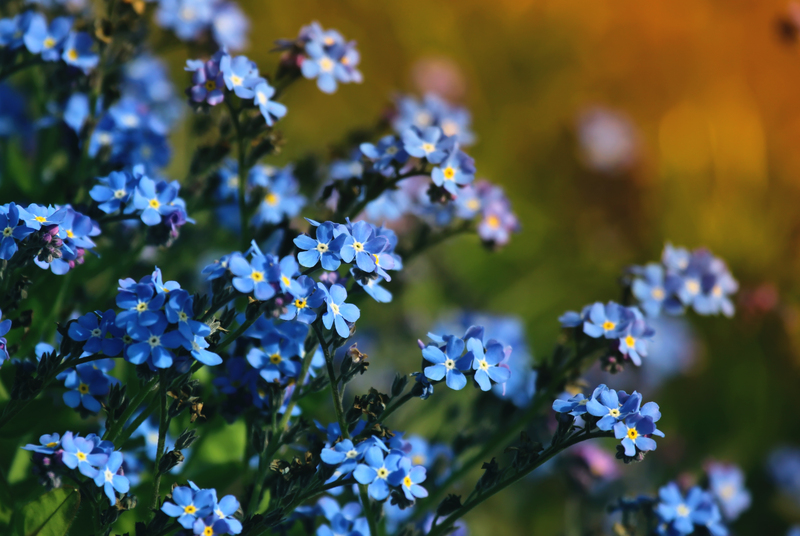Pruning Patterns: Impressive Hedge Trimming Shapes and Techniques
Posted on 27/08/2025
Pruning Patterns: Impressive Hedge Trimming Shapes and Techniques
Pruning patterns and hedge trimming have been essential for garden lovers and landscapers seeking to transform ordinary foliage into living masterpieces. Well-maintained hedges do far more than define boundaries--they can act as green sculptures, providing visual interest, privacy, and even a sense of whimsy. In this comprehensive guide, we'll explore the art and science behind hedge pruning patterns, stunning trimming shapes, and advanced techniques to turn any hedge into a focal point of your landscape design.
Why Hedge Pruning Patterns Matter
Pruning is more than cutting away unruly growth--it's about sculpting and nurturing plants for health and aesthetics. While regular pruning maintains the hedge's size and vigor, adopting innovative pruning patterns adds a personal statement to your garden. Creative hedge trimming not only enhances curb appeal, but provides:
- Improved plant health by removing dead or diseased branches
- Denser, more attractive growth
- Opportunities for artistic expression and unique landscaping
- Greater privacy and functional division within your outdoor space
- Wildlife shelter and increased biodiversity

Getting Started: Tools and Preparation for Impressive Hedge Trimming
Successful pruning relies on using the right hedge trimming tools and following sound technique. Prior to starting any hedge shaping project:
Essential Hedge Trimming Equipment
- Sharp hedge shears - for clean, precise cuts
- Electric or battery-powered trimmers - perfect for large or tough hedges
- Bypass pruners - for smaller branches and intricate work
- Measuring tape, stakes, and string - for guiding straight lines and consistent shapes
- Protective gear - gloves, eyewear, and sturdy shoes for safety
Preparation Steps
- Inspect your hedge for nesting birds or hidden wildlife--delay work if necessary.
- Remove debris and dead wood to minimize disease risk.
- Sharpen all tools for smooth, clean cuts and reduce plant stress.
- Plan your design--sketch or visualize your chosen trimming pattern before starting.
Classic Hedge Pruning Patterns
Whether you prefer formal order or a more natural look, there are several tried-and-true hedge shaping patterns:
1. Straight Lines and Flat Tops
This formal style is synonymous with traditional gardens:
- Uniform, level tops and crisp vertical sides
- Requires regular trimming for sharp edges
- Ideal for boxwood, privet, and yew hedges
2. Rounded or Curved Hedges
Soft, flowing curves can complement more relaxed gardens and lend a sense of movement:
- Gently arching tops or curved perimeters
- Masks imperfections and blends with natural plant forms
- Suited for larger hedges and versatile species
3. Tapered Hedges ("A-shape" or "Batter")
This practical shape is highly recommended for healthy growth:
- Narrower at the top, wider at the bottom, allowing sunlight to reach lower branches
- Reduces risk of lower dieback and maximizes foliage density
- Common in professional topiary and hedging
Advanced Hedge Trimming Shapes
Geometric Mastery
Geometric hedge shapes demonstrate meticulous skill and attention to detail. Shapes include:
- Perfect spheres
- Cubes and rectangles
- Pyramids and cones
- Multifaceted designs combining several forms
These styles require frequent trimming, mathematical precision, and well-chosen plant species for sharp lines and robust foliage.
Lollipop and Standard Shapes
This playful technique features a rounded ball of foliage atop a clear trunk:
- Ideal for small topiary hedges or ornamental standards
- Best with slow-growing species like boxwood or lonicera
- Adds vertical interest to borders or container gardens
Animal Topiary and Whimsical Forms
For true artistic gardens, create living sculptures such as animals, spirals, or fanciful figures:
- Requires patience, wire frames, and progressive shaping
- Works best with fine-leaved, dense-growing hedges
- Transforms common hedges into conversation pieces
Techniques and Tips for Pruning Hedge Patterns
Regardless of your chosen pattern, following effective techniques assures success:
1. Trim Outside of the Growing Season
- Late winter or early spring (before new growth appears) is ideal for most formal hedges
- Avoid late summer/fall trims that may trigger tender growth, which is vulnerable to frost
2. Create Straight Lines
- Use taut string lines or stakes for guidance
- Step back frequently to assess symmetry
- Cut slightly above runs for clean, level forms
3. Keep Tools Clean and Sharp
- Disinfect blades before use--prevents disease transmission between plants
- Sharpen cutting edges regularly to reduce bruising and stress
4. Use the "Thin and Shape" Method
- Start by removing large, unwanted branches (thinning)
- Shape the outer foliage for the desired contour
- Avoid cutting too deep into old wood, as some species struggle to regrow
5. Don't Forget the Base
- Wider bases ensure lower branches get sunlight
- Prevents "bare-legged" hedges--no leaves on the bottom
6. Gradual Shaping for Complex Patterns
- Major shape changes should be made over several seasons
- Allows the hedge to recover and avoids shock
Popular Plants for Shaped Hedges
Choosing the right plant species is crucial for lasting, attractive pruning patterns:
- Boxwood (Buxus sempervirens): classic for small, intricate or formal shapes
- Yew (Taxus baccata): exceptional for detailed topiary and dense lines
- Privet (Ligustrum): vigorous, hardy, and versatile for various styles
- Hornbeam (Carpinus betulus): robust and tolerates heavy cutting for bold designs
- Laurel (Prunus laurocerasus): fast-growing and lush for larger, informal forms
- Lonicera (honeysuckle): suitable for playful, small-scale topiary projects
Seasonal Hedge Pruning: When and How Often?
Timing your hedge trimming pattern is just as important as technique. Frequency and timing depend on plant species, growth rate, and desired precision:
- Formal, tight shapes: minimum twice a year, often more in growing season
- Informal or loose styles: once or twice per year, typically after flowering or before dormancy
- Topiary or artistic patterns: light trims every 6-8 weeks during active growth
Keep in mind that nesting birds may delay hedging in spring and early summer--always check before you cut!
Common Mistakes to Avoid in Hedge Pruning Patterns
- Cutting too hard: Some plants don't regenerate from old wood
- Neglecting the base: Results in sparse, leggy growth at the bottom
- Infrequent trimming: Makes it hard to maintain clean lines and patterns
- Ignoring sunlight: Flat sides block light to lower branches; opt for tapered shapes
Hedge Trimming Shapes for Small and Large Gardens
No matter your garden's size, there's a hedge trimming pattern to match:
- Urban courtyards: Mini topiary spheres, domes, or even geometric cubes for modern flair
- Cottage gardens: Free-form or gently arched hedges blend beautifully with perennials and shrubs
- Large estates: Grand straight lines, multilayered tiers, or dramatic animal topiary for spectacle
Combining Patterns and Enhancing Appeal
For the truly ambitious, combining several hedge trimming techniques creates an eye-catching tapestry. Try:
- Layered hedges: Varying heights add depth and visual intrigue
- Mixed geometric and natural forms: Spheres set against billowy waves
- Integrating flowering hedges: Add seasonal color and pollinator support
- Espaliered trees against hedged backgrounds: Boosts sophistication

How to Maintain Your Pruning Patterns Season After Season
Beautiful hedge designs require ongoing attention:
- Inspect regularly for pests, diseases, and dead branches
- Water deeply in dry spells and mulch to retain moisture
- Feed with balanced fertilizer in spring for vigorous regrowth
- Renew patterns after heavy snow or storm damage
Conclusion: Transform Your Garden with Pruning Patterns
Whether you're aiming for elegant straight lines, bold geometric shapes, or whimsical animal figures, mastering the art of pruning patterns and hedge trimming shapes can dramatically elevate your garden. With the right techniques, tools, and plant choices, anyone can turn plain hedges into stand-out elements of living design. Start small, practice patience, and soon, your hedges will be the pride of your landscape.
Ready to transform your yard? Gather your tools, choose your favorite pattern, and let your creativity take root in your garden beds!

